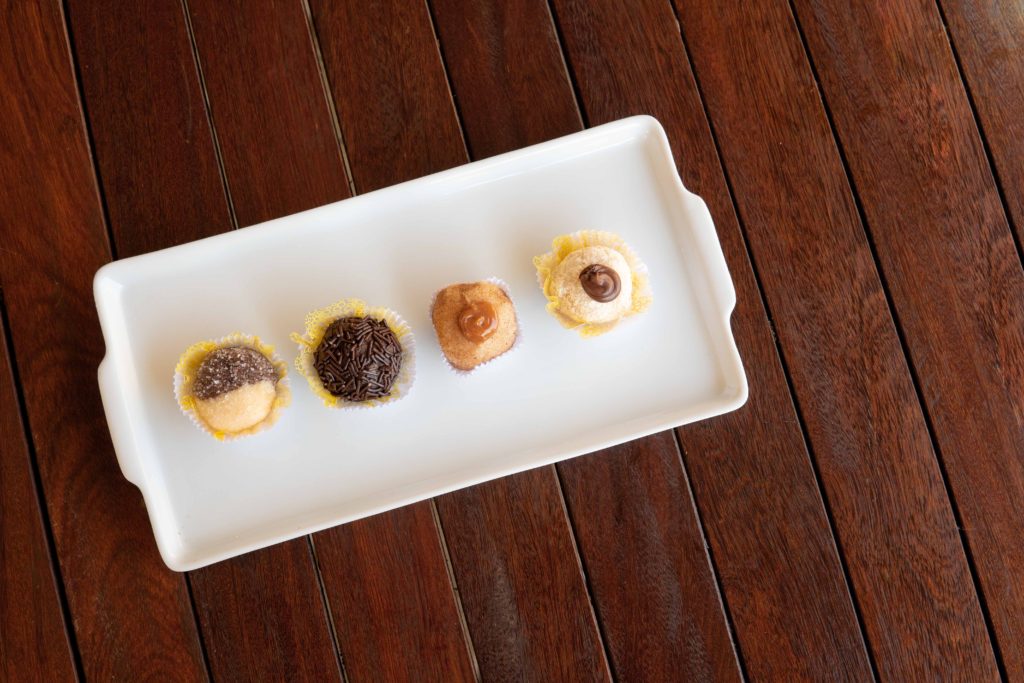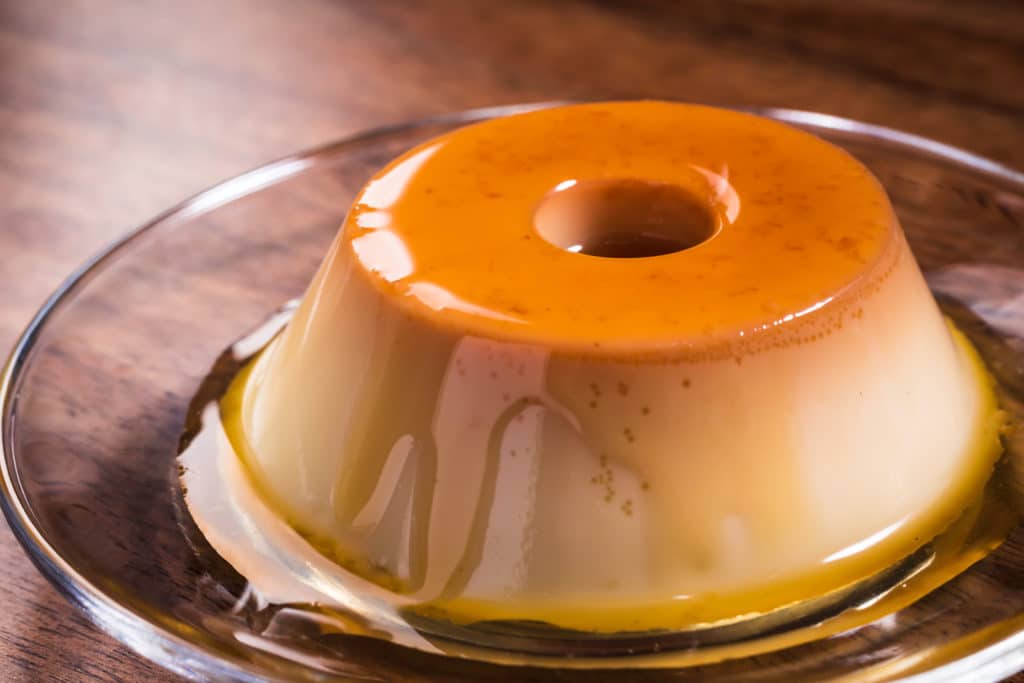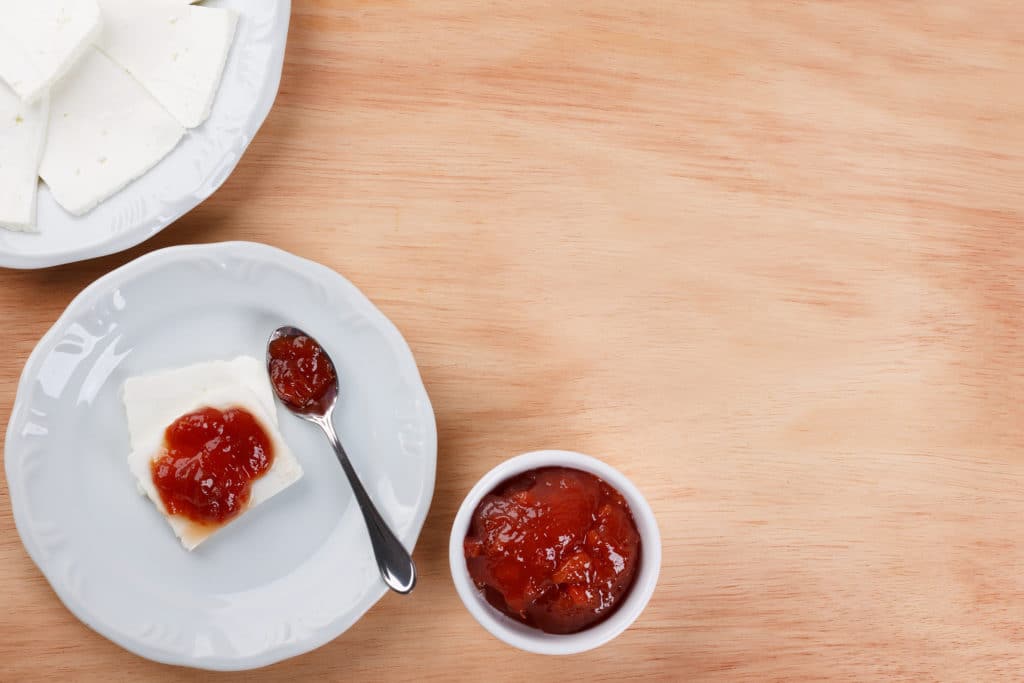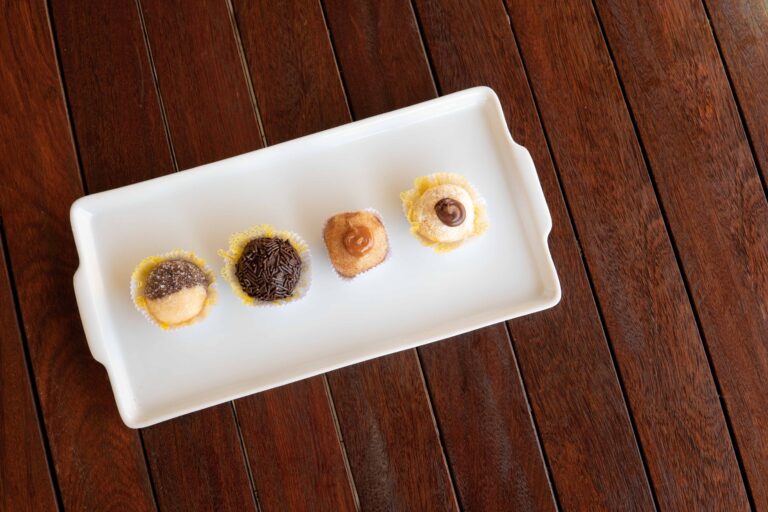Have you heard of these Brazilian desserts? With various fruits, nuts, and cocoa beans growing in abundance, it’s easy to see why there are so many sweet treats in Brazil. The entire nation is known for its sweet tooth, in fact. Brazilian desserts tend to include extra sugary ingredients, such as sweetened condensed milk.
Whether you’re moving to Brazil, are a Brazilian who recently immigrated, or just a foodie, read on to experience Brazil’s delicious desserts.
1. Quindim
Quindim is made from grated coconut, egg yolks, coconut milk, and sugar—similar to a Portuguese sweet called Brisa do Lis. However, the name quindim comes from dikende in Kikongo, a Bantu language, and means “the demeanor and humor of teenage girls” or “charm and enchantment” because of its bright yellow color.
Quindim was introduced by African slaves in the state of Bahia in the 17th century, who used the abundance of shredded coconut in the area to make the treat.
2. Brigadeiro

The brigadeiro is one of Brazil’s most distinctive desserts. It’s made from condensed milk rolled in chocolate sprinkles. The most traditional flavor is made with cocoa powder, but you can buy them in a whole range of flavors, from coconut to passion fruit and Sicilian lemon.
Brigadeiros are often bought in huge trays for birthday parties or festive events.
This chocolate truffle has a surprisingly political history. It was popularized when women sold the sweets to advocate for presidential candidate Brigadier Eduardo Gomes after they earned the right to vote in the 1940s.
3. Rapadura
Rapadura is a typical Brazilian sweet from the Northeast, and is one of Brazil’s oldest traditional desserts. The treat’s origins come from the time when Brazil’s main crop was sugarcane, before coffee arrived in the 1800s. Rapadura is sold in small blocks or pyramids, rather than granules.
4. Pavê
The joke in Brazil is that “Pavê e so pra ver”, or “is just to look at”, while you start piling onto your dish before anyone else can.
The dessert is like tiramisu, but it consists of layers of ladyfingers, condensed milk, and chocolate. There are many takes on Pavê, and though chocolate is the most common flavor, you can also get pineapple, strawberry, white chocolate, coconut, pumpkin, and peanut variations.
Pavê is served cold and commonly seen at parties or other events in Brazil.
5. Pudim De Leite Condensado

Pudim de leite condensado, or Brazilian flan, is not unlike a crème caramel, but it requires only a handful of ingredients. Eggs, milk, sugar, and condensed milk combine to produce the sweet, jiggly flan which is a typical feature of Sundays or family celebrations in Brazil.
The pudding is believed to have evolved from a Portuguese recipe, pudim de priscos, created by a priest, Father Priscos.
6. Paçoca de Amendoim
Paçoca de Amendoim, or Capiroçava, is a sweet made from peanuts, manioc flour (cassava flour) and sugar. Paçoca comes from São Paulo in the south of Brazil. It’s made by pounding all the ingredients with a mortar and pestle.
Paçoca is traditionally eaten during Holy Week and Festa Junina.
7. Bolo de rolo
Bolo de rolo is a pastry created with very thin dough. This sweet treat is originally from Recife and traditionally filled with guava paste, but nowadays, you can also get it in several flavors including chocolate.
It’s said that this cake was inspired by a Portuguese cake called colchão de noiva, or mattress of the bride, which is a rolled pastry filled with nuts.
8. Goiabada

Goiabada is a popular dessert that originated when Portuguese settlers used guava instead of quince in a recipe for marmelada (quince cheese).
Made by combining guava with sugar into a mix that can be sliced, you can use goiabada as a filling for cakes, on its own, or even with a slice of cheese in a treat known as Romeu e Julieta because it’s such a perfect pairing.
9. Mousse de maracujá
Quick and easy to make, mousse de maracujá is a traditional Brazilian dessert of just three ingredients. Often found at parties, bakeries, and restaurants, mousse de maracuja is made with just passion fruit, milk, and creme de leite, and topped with whipped cream.
10. Pé de Moleque

Pé de Moleque, a candy made from peanuts and rapadura, is made by mixing peanuts into melted sugar, which is then cooled and broken into irregular pieces.
Pé de moleque varies from recipe to recipe and can be light or dark, soft, or very crunchy.
More Brazilian desserts
Brazil is a diverse country with lots of variations in dessert recipes, giving foodies a lot to try. If you want to try even more, check out the following:
- Rabanada: This is Brazil’s version of French toast that’s popular at Christmastime.
- Beijinho: A coconut and condensed milk candy served at a birthday party.
- Canjica: This hominy pudding is a wintry Brazilian sweet treat.
- Brazilian carrot cake: Brazilian variation of carrot cake made with blended carrots.
Along with these traditional Brazilian desserts, you can also find globally popular sweet treats like: pavê and beijinho, which have become favorites beyond Brazil’s borders. In addition to these indulgences, you’ll discover classic Brazilian snacks to try, such as coxinha and pão de queijo, which highlight the rich flavors and culinary traditions of the country. Each of these treats provides a delightful experience, showcasing the unique blend of ingredients and techniques that characterize Brazilian cuisine.
- Ice cream
- Chocolate cake
- Rice pudding
Which Brazilian treat will you try?
On your next trip to Brazil—or a Brazilian part of town—keep an eye out for these traditional desserts and give one a try. Whether it’s trying pé de moleque or taking a nibble of pave, Brazilian desserts are one utterly delicious way of experiencing a culture.
If you’re interested in learning more about Brazilian food like tapioca or açaí, check out our guides to popular Brazilian snacks and traditional Brazilian dishes.
Sending money to Brazil
Anytime you’re sending money to Brazil, Remitly can help. Remitly makes international money transfers faster, easier, more transparent, and more affordable. Our reliable and easy-to-use mobile app is trusted by over 5 million people around the world.

